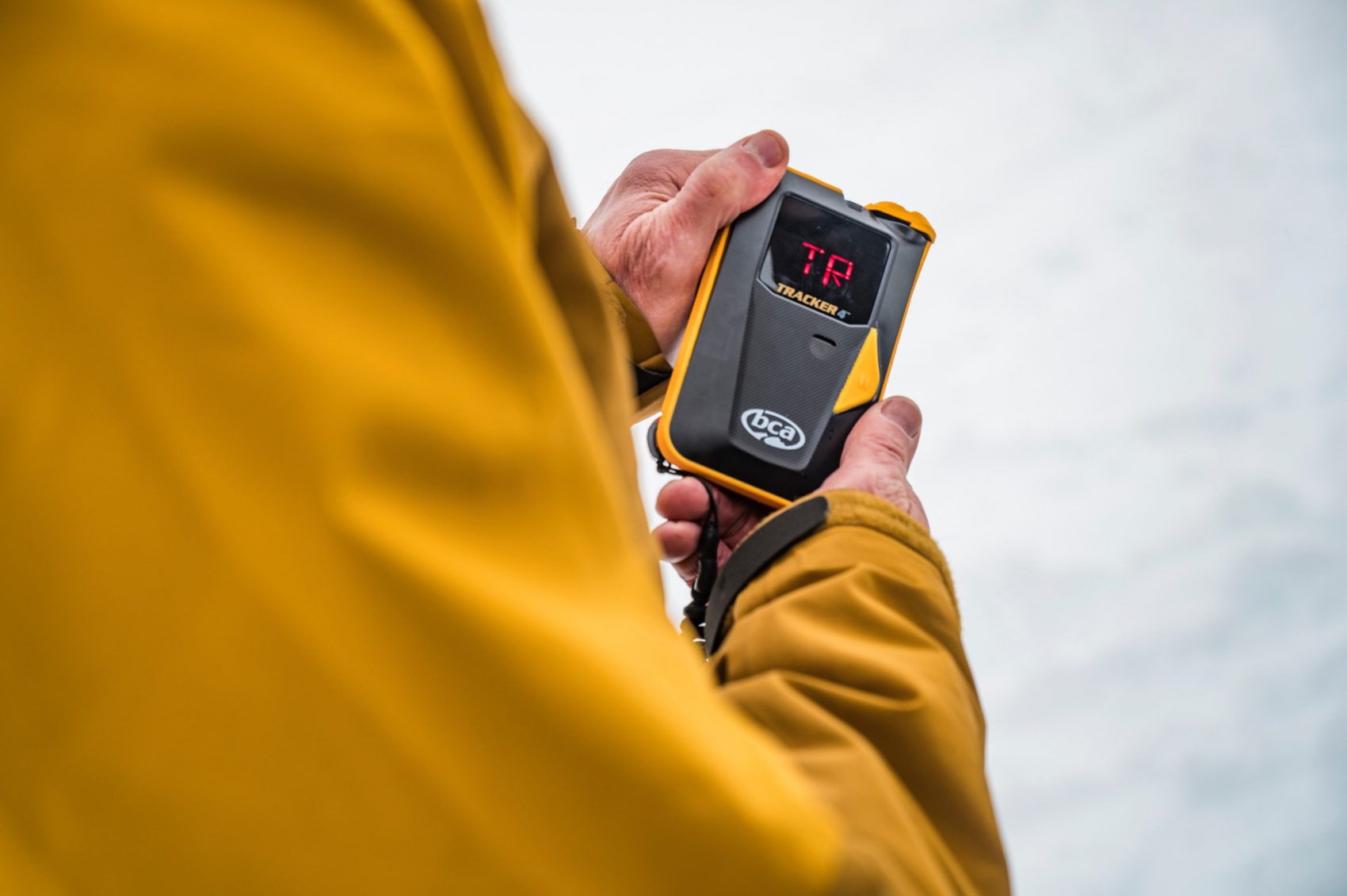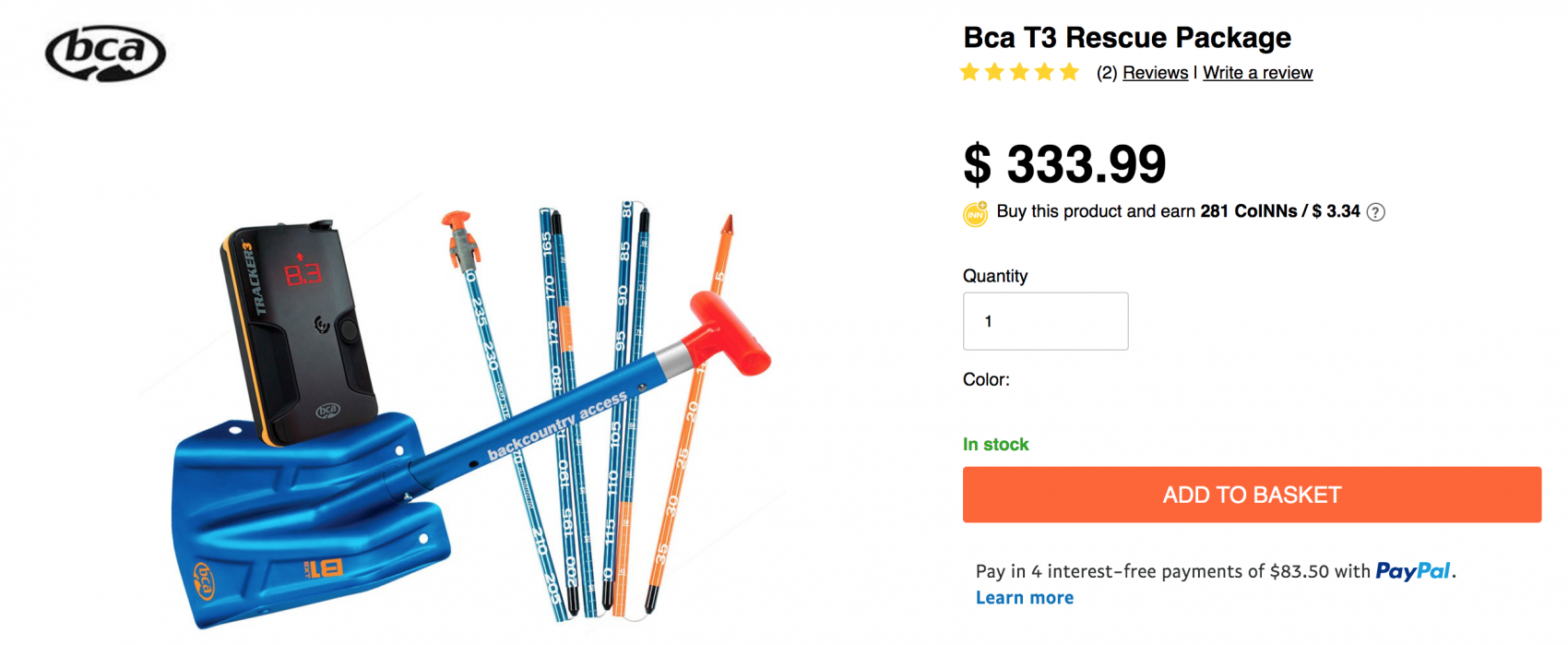
This post was first published in August 2021.
The gold standard of avalanche rescue gear is a beacon, a shovel, and a probe—three products you hope you never have to use outside of a beacon park. A standard-issue kit like this will almost always set you back at least a few hundred dollars—$333 is the cheapest one I found on snowinn.com, and that’s a bargain. Avalanche airbags are quickly becoming a recommended part of the standard backcountry quiver, too—but good luck finding one for under 500 bucks.
One Reddit user posted an interesting question about the pricing related to avalanche safety gear. In a Reddit forum titled, “Why is avalanche gear so goddamn expensive?” they wrote:
“I’m not saying that I’m not ok with paying these prices, as I don’t want to make any compromises regarding anything that a person’s life could depend on, but still; are these prices justified? Or are manufacturers taking advantage of people not having a lot of options to pick from? It’s just that I’m having a hard time believing that a piece of aluminum with a hollow telescopic shaft is worth almost a hundred bucks.”
This question led me to want to find out why avalanche safety gear is priced the way it is. I mean, if a beacon, shovel, and probe are absolutely necessary for anybody wanting to make some turns in a place where avalanches kill, shouldn’t these things be more affordable to eager and frugal ski bums everywhere? After talking with Craig Hatton over the phone, the Vice President and General Manager of Backcountry Access (BCA), I found out why these essential, life-saving pieces of gear are priced the way they are. It really only came down to two things.
Supply and demand. Hatton told me that all backcountry gear is made with custom parts that are only manufactured in relatively small numbers—tens of thousands as opposed to millions for some consumer products. He said that it is those small numbers that make an avalanche shovel cost much more than a shovel you would find at a hardware store.
Hatton went on to describe just how much goes into making a beacon, even if the idea behind them is simple: a carriable device with a ‘search’ and ‘send’ function that can withstand the deadly rollercoaster ride of an avalanche and emit a radio signal in a specific pattern that makes it easy for rescuers to find that buried person with their own beacons. At least, that’s avalanche beacons in a nutshell. The more sophisticated the beacon—more advanced beacons having features for more experienced users such as a flagging function for multiple burials—the higher the price.
BCA has three key suppliers located all over the world for avalanche beacons. “The supply chains are really complicated,” Hatton told me. It starts with BCA supplying components to their factories around the world, with some factories sourcing components directly for BCA. These factories begin with a “bare board” (PCB) which is not yet functional because it does not have the required components in place. Once the factories obtain the PCBs, they then “populate” them into an “assembled bare board” (PCBA), which is functional. All electronics—from beacons to smartphones—have a PCBA. The factories populate the PCBs with components via high-tech machinery, turning them into functional PCBAs, before placing them into the back half of the beacon’s case. Once populated and assembled into half of the case, they are sent out for further assembly and “vigorous testing” in BCA’s headquarters in Boulder, Colorado, according to Hatton.

The testing BCA does in Boulder is an incredibly important part of the beacon-making process. People’s lives literally depend on it. So you can imagine it isn’t cheap, either. Types of tests include a “Hard Drop Test,” where a beacon is dropped from about four to five feet in the air onto a hard surface. The Hard Drop Test checks that a beacon would still emit a working signal in the event that a skier or rider is caught in a slide and taken through trees, rocks, or other potential terrain hazards that could damage the device. BCA also performs a “battery life” test, which makes sure the beacon can emit a working signal for at least 200 hours while it’s switched on and in ‘send’ mode, along with a series of other “ETSI standards,” which are a complicated set of regulations put in place by ETSI and recognized internationally.
In the United States, the radio signal that an avalanche beacon emits must also fall within FCC certification standards (Yes, the FCC actually gets involved with your beacon because it’s emitting a radio frequency). If a beacon passes all these tests and is used correctly without abuse, it can theoretically last an entire lifetime, according to Hatton. He said that analog beacons developed in the early 2000s are still in use today, even though he doesn’t recommend anyone continue to use a technology that is now considered “outdated.”
Once they’re tested to make sure everything checks out, they go to the production floor for further validation. It is here that the other half of the case is closed, making the unit whole and ready for action. Every beacon is equipped with a harness and user manual before getting shipped out to BCA’s distribution center in Seattle. From there, they go to the dealers and then onto the bodies of living, skiing, souls.
BCA has three main competitors: Pieps/Black Diamond, an Austrian company—Mammut, a Swiss company—and Ortovox, a German company. While these brands have a stronger grip on the European backcountry skiing markets, Hatton says that BCA is the market leader for avalanche rescue gear in North America and that the market is really a conjunction of two separate markets: the backcountry skiing and snowboarding market, and the sled market. BCA’s market is split 60/40 between skiing and sledding, with the latter being less sensitive to higher-price-point products.
Hatton said that pricing is really driven by the component costs (many components, like antennae, are custom parts), shipping and taxes, VATs depending on where the factory is, and the price points that the market sets. When it comes to avalanche shovels, tooling costs and the cost of high grade, 7075-series aluminum have a large impact on pricing. An entry-level avalanche shovel will run you about $50, with a basic telescopic shaft and typically plastic handle, while a more sophisticated shovel with lower-weight aluminum, a metal handle, and a “hoe mode”—which allows the digger to quickly rearrange the shovel blade in a way that allows for speedier burial victim recovery by pulling snow instead of digging it—can reach prices up to $100.
He added that “price points are set by the market,” or what the market is willing to pay. The market is then handicapped by the price points that those brands set. For the last ten to fifteen years, avalanche beacon prices have stayed relatively static. They haven’t gone up very much and they certainly haven’t gone down. But now all of that may be changing due to massive supply chain constraints brought about by the pandemic.
“Demand in the market is stronger than ever,” Hatton said. “The challenge that brands are having—including BCA—is supply chain constraints.”
Virtually every market right now is experiencing supply chain restraints due to the pandemic. To put it in perspective, three major automobile factories are completely idle right now because they can’t get materials to build cars. Hatton said that BCA’s timelines for integrated circuit boards have gone from eighteen to twenty weeks, to now forty to fifty weeks, because of supply chain constraints and increasingly high demand due to the rapidly growing electric vehicle market.
“Imagine a [relatively small] company like ours competing for electronic components with a company like Ford, Chevy, or Tesla. It’s extremely challenging,” Hatton said.
Currently, Hatton says there’s no end in sight for these current constraints and that they will likely run into 2023 before the supply chain stabilizes. BCA is holding its current pricing for this upcoming winter, but Hatton expects that gear prices will likely go up by the following winter for most brands. He said that BCA will evaluate what the supply chain does at the end of this season and then adjust pricing if necessary.
As we wrapped up our talk, Hatton asked me to share in this article BCA’s intensive focus on education. He said that BCA is known for its stance on education and that it is “very vocal and adamant” about pushing out the message to people—especially new backcountry users. BCA has hundreds of education and how-to videos on its website and YouTube, and hosts in-person avalanche safety classes across North America every winter. Because if you don’t know how to use your expensive new gear in the event of an avalanche burial, the person under that mountain of snow may as well already be dead. This is why BCA creates an easy-to-use, intuitive user interface that most people can understand the first time they use any BCA beacon. So, when planning on getting into the backcountry—when thinking about what shiny new avalanche beacon to get or replace—just remember what Hatton told me:
“The best beacon on the market is the one you know how to use.”
View this post on Instagram
Biden’s inflation economy
Compared to Groceries…..pretty cheap
Because it’s become a trustfunder city slicker yuppy sport. All prices go up when that happens.
cuz you poor